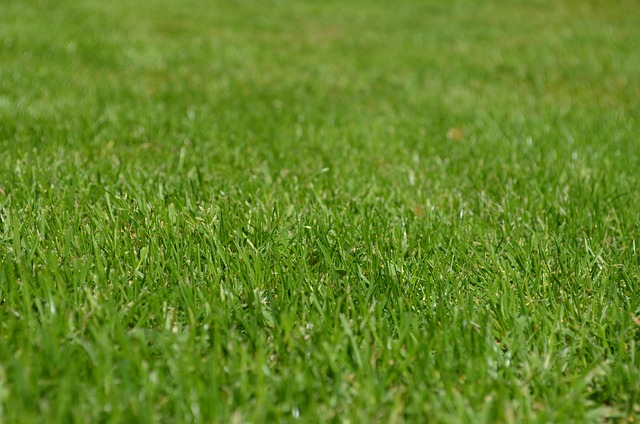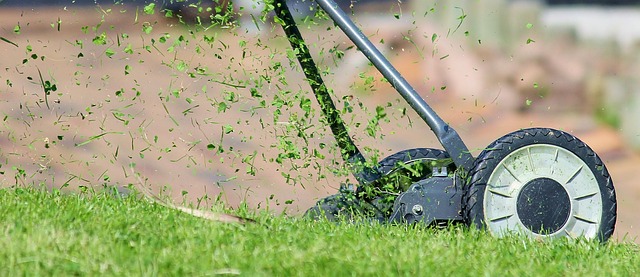Lawn care and landscaping can be transformed by integrating mulching and edging practices. Mulch acts as a protective barrier, retaining moisture, suppressing weeds, and providing nutrients. Edging defines boundaries, prevents grass encroachment, and simplifies maintenance. Together, these techniques offer synergistic benefits including protected soil, reduced water loss, prevented weed growth, improved soil structure, and enhanced landscape aesthetics. Apply an even layer of mulch (2-4 inches) and use appropriate edging tools for precise control to achieve professional results. Regular replenishment ensures optimal effectiveness in lawn care and landscaping.
Transform your lawn into a picture of perfection with effective mulching and edging techniques. This comprehensive guide explores the benefits and best practices of mulching, empowering you to enhance your lawn’s health and appearance. From understanding the power of organic mulch to mastering precise edging skills, discover how these simple yet impactful practices can revolutionize your landscaping efforts. By combining both techniques, you’ll achieve a neat, professional finish, ensuring your lawn becomes the envy of the neighborhood.
- Understanding Mulching: Benefits and Best Practices
- Edging Techniques for Neat and Professional Lawns
- Combining Mulching and Edging for Optimal Lawn Care
Understanding Mulching: Benefits and Best Practices

Mulching is an essential practice in lawn care and landscaping, offering numerous benefits for your outdoor space. It involves placing a layer of organic or inorganic material over the soil, around the base of plants, and along edges. This simple act creates a protective barrier that significantly improves the overall health and appearance of your lawn. One of the primary advantages is moisture retention; mulch acts as a natural insulator, preventing water evaporation from the soil, which is crucial for keeping grass roots hydrated, especially during hot summer months.
Additionally, mulching helps suppress weeds by blocking sunlight, inhibiting their growth. By reducing weed competition, it allows your grass to thrive and extends the time between mowing, saving you time and effort in lawn maintenance. The organic varieties also add essential nutrients to the soil as they decompose, providing a natural boost for your lawn’s overall health and color. Best practices include applying an even layer of mulch, typically 2-4 inches thick, and avoiding piling it against tree trunks to prevent rot. Regularly replenishing the mulch ensures its effectiveness in lawn care and landscaping.
Edging Techniques for Neat and Professional Lawns

When it comes to achieving a neat and professional look for your lawn, edging plays a crucial role in lawn care and landscaping. It involves carefully defining the boundaries between your grass and walkways, gardens, or other landscape features. There are various techniques to choose from, each offering unique advantages for different yard layouts.
One popular method is using handheld edgers, which are perfect for precise, manual control. These tools allow you to sculpt curves and corners with ease. For larger properties or straight edges, a string trimmer can be utilized, providing a quick and efficient solution. Alternatively, power edgers equipped with sharp blades can swiftly cut through tough grass, ideal for maintaining formal, clean lines. Incorporating these edging techniques into your regular lawn care routine will not only enhance the overall aesthetics but also ensure a well-maintained and polished landscape.
Combining Mulching and Edging for Optimal Lawn Care

Combining mulching and edging in your lawn care routine is a game-changer for maintaining a lush, healthy landscape. Mulching involves adding organic material, like wood chips or straw, to the top layer of soil around plants. This not only suppresses weeds but also retains moisture, provides essential nutrients, and regulates soil temperature. Edging, on the other hand, defines the boundaries between your lawn and paths or flower beds by trimming away grass and exposing the soil. Regular edging prevents grass from encroaching onto walkways and allows for easier maintenance of these areas.
When done together, these practices offer synergistic benefits. Mulching after edging ensures that the exposed soil is protected from direct sunlight, reducing moisture loss and preventing weed growth. Moreover, mulching adds organic matter to the soil, improving its structure and fertility over time. This holistic approach to lawn care not only enhances the aesthetics of your outdoor space but also contributes to a healthier, more sustainable landscape.
Mulching and edging are powerful tools in the lawn care and landscaping arsenal, offering both aesthetic and functional benefits. By understanding the best practices for each technique and combining them effectively, you can transform your lawn into a model of neateness and health. Whether enhancing existing landscapes or establishing new turf, these simple yet impactful practices ensure your yard stands out as a true outdoor oasis.
